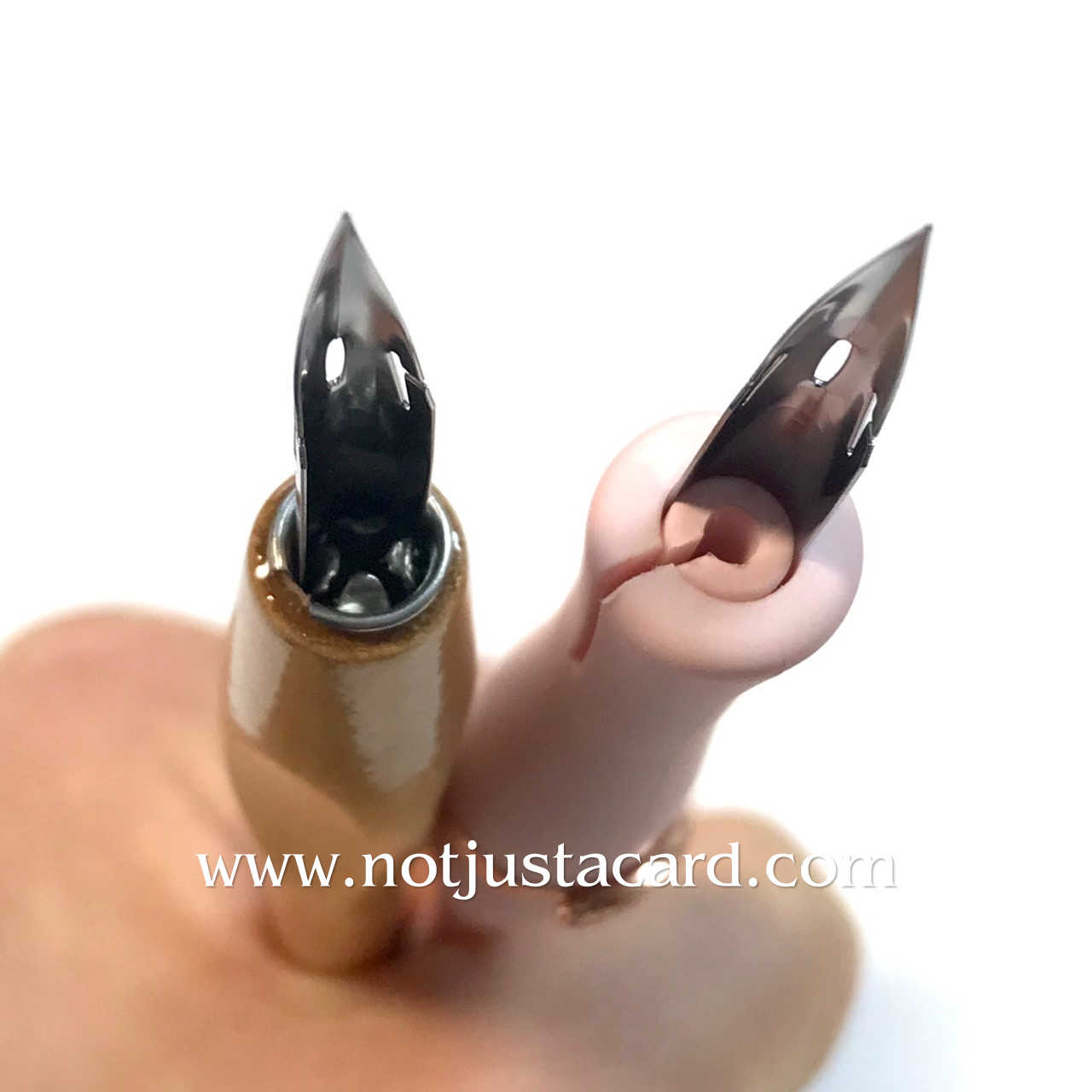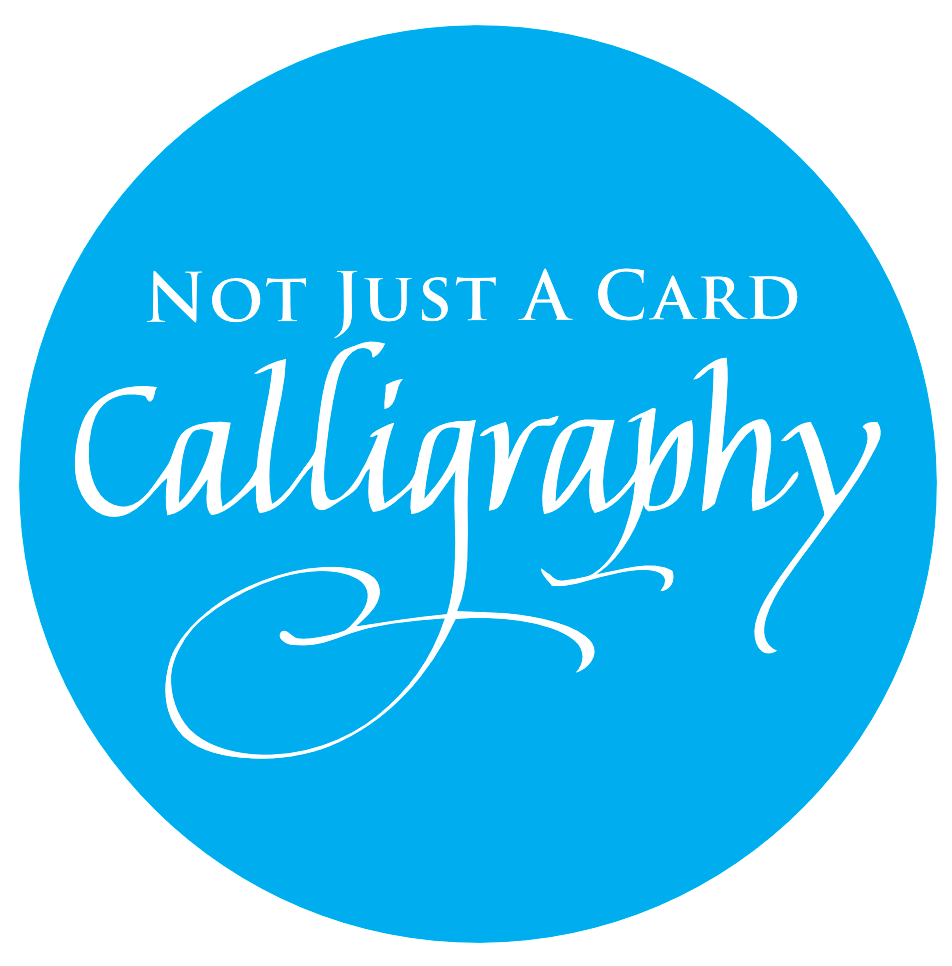
Generally speaking, there are 2 types of penholders, straight penholder and oblique penholder. A wide range of penholders can be found on the market, including plastic, wood, metal, bone, glass and resin holders. Penholder can sometimes be called ‘Pen Holder’, ‘Nib Holder’, ‘Calligraphy Holder’ and ‘Dip Pen/Nib Holder’.

Straight Penholder
Straight penholder suits both right-handers and left-handers. You can use a straight penholder to write different scripts, including Italic, Gothic, Foundation, Carolingian, Uncial, Copperplate, Spencerian and Modern Calligraphy. Both pointed nib and broad-edged nib can be fitted into the holder.
Penholder's Mechanisms:
Penholders with a Universal InsertPen holder with a universal insert, also known as a nib ferrule, it contains 4 metal prongs and this pen holder can fit a wide range of nibs, including large nib like Brause Sténo 361 Blue Pumpkin and tiny nib Brause 66EF. The nib should be placed between the ‘ring’ and the prong(s).
Pros and Cons
Penholders with a universal insert can fit a wide range of nibs, including small and large nibs. Basically, the ferrule acts like a clamp, the 4-prong design grabs the nib tightly, not allowing them to wiggle, but the downside is it can take some effort to remove the used/old nib from the holder. Try not to remove the nib with your fingers, the tip of the nib and the edges are quite sharp, you might end up hurting yourself. Fold a paper towel in half or use a tea towel to cover the nib and then pull it out carefully. In addition, most of the ferrules on the market are made from metal, which is prone to rust and the prongs can be bent. However, ferrules are cheap and replaceable, most manufacturers insert the ferrules to the holders without glue, so you can remove the rusty ferrule with a pair of pliers easily, just remember the old ferrule needs to be pulled out straight!
Penholders with a plastic ring groove
Some modern penholders have a groove which can fit assorted nibs by placing the nib into the arc.
Pros and Cons
Much easier to insert/remove the nib compare to the holders with a universal insert. But because of the plastic collar design, some nibs might wiggle while writing or drop out from the holder when you are rinsing the pen under water. For example, the Tachikawa T-40 holder from Japan is too loose for Brause Bandzug broad-edged nibs.

西洋書法第一章:直桿筆
西洋書法的沾水筆﹝Dip Pen﹞,顧名思義是需要沾墨水來書寫的。沾水筆結構簡單,由筆桿和筆尖組成。在網上有時候會看到「沾水筆」和「蘸水筆」的兩種寫法。
筆桿大致分為兩類:直桿和斜桿。製作筆桿的物料種類繁多,包括塑膠、木製、金屬、玻璃、樹脂、甚至乎動物骨頭都可以用來製作筆桿。視乎製作物料,筆桿的長度、重量和粗幼程度各有不同。
相對於斜桿筆,直桿筆比較普遍,在一般的美術用品店都能買到,價格通常比斜桿筆稍為便宜一些。直桿筆除了用來寫西洋書法外,也可用於漫畫、素描和畫圖則。我也有一些學音樂的顧客,他們會用書法筆來畫五線譜。
使用直桿筆書寫的字體很多,基本上所有字體都可以用直桿筆來書寫,當中包括:意大利斜體﹝Italic﹞, 歌德體﹝Gothic﹞, 基礎手寫體﹝Foundation﹞, 加洛林體﹝Carolingian﹞, 安瑟爾體﹝Uncial﹞, 銅板體﹝Copperplate﹞, 史賓賽體﹝Spencerian﹞和現代書法﹝Modern Calligraphy﹞。不管你是左撇子或是右撇子,直桿筆並沒有左右之分,這也是直桿和斜桿筆的區別之一。
直桿筆的設計分為兩類:金屬花瓣和圓筒式
兩者相比,金屬花瓣的直桿筆比較傳統。它的好處是不管是平尖﹝Broad-Edged Nib﹞還是點尖﹝Pointed Nib﹞,基本上都可以安裝到金屬花瓣式的直桿筆裡。但壞處是容易生锈,然而,金屬花瓣的部份是可以更換的,且價格便宜。大部份的生產商都沒有使用膠水﹝Glue﹞固定金屬部份,所以可以用鋏子把舊的金屬部份拉出更換。
金屬花瓣式的筆尖的安裝方法
從外表能看到筆的中間有一空位,有很多第一次使用沾水筆的朋友會誤把筆尖直接放進這裡。其實正確的方法是將筆尖插入一片或兩片金屬片中間,像爪子般把筆尖牢牢固定在筆中。四塊金屬片各有鬆緊,如果筆尖與花瓣的空隙太緊放不進去,可嘗試換個位置。
圓筒式的筆尖的安裝方法
圓筒式的筆桿相對簡單且容易安裝,直接把筆尖放到弧形的凹槽便可以了。圓筒部份主要是塑膠制的,不會生锈。但所有東西都有利弊,因為圓筒凹槽的設計,所以未必能把筆尖牢牢抓緊,視乎筆尖牌子和種類。比如,日本的Tachikawa T-40 木柄直桿筆不可放德國的Brause Bandzug 平尖,筆尖太鬆會直接掉下來。雖然如此,但個人還是蠻喜歡Tachikawa T-40這款筆的,因為他的筆桿相對比較粗和沈重一些。另外,握筆部份有軟軟的海綿設計,減少疲憊感,而且買筆的時候還有透明筆蓋附送,可保護筆尖。
